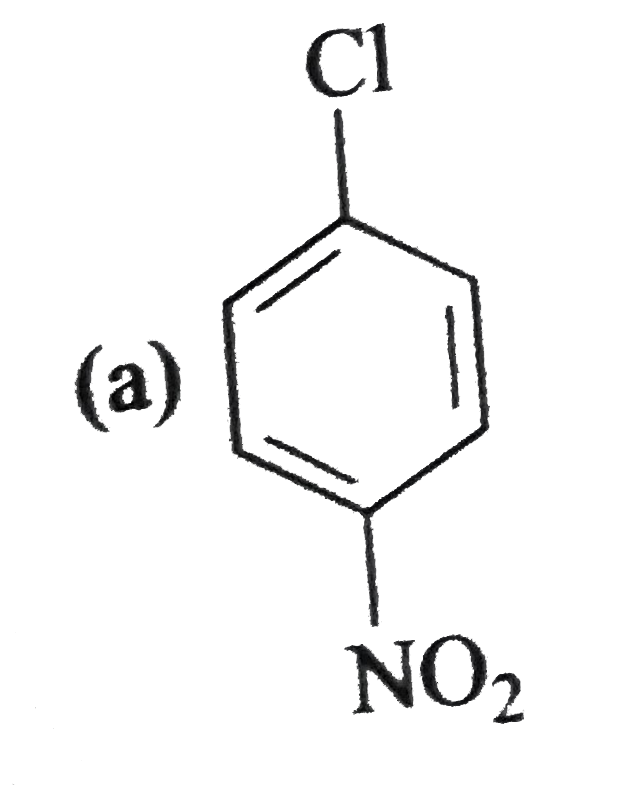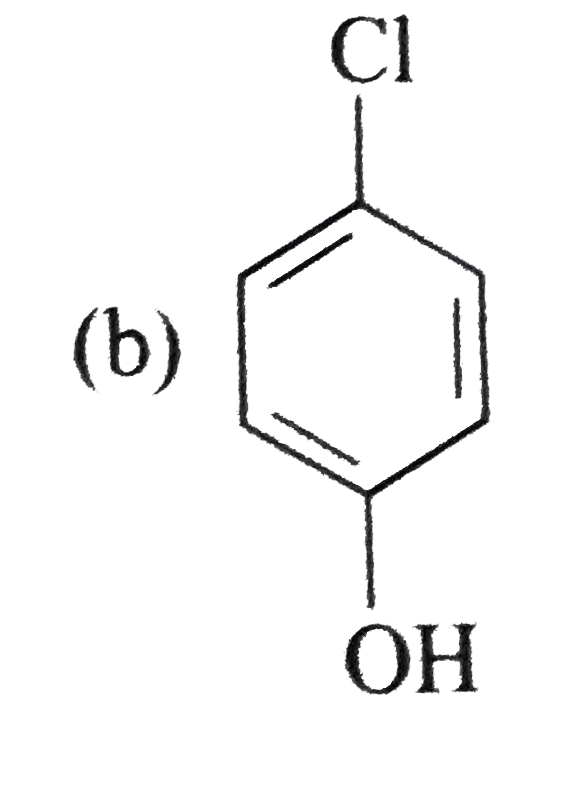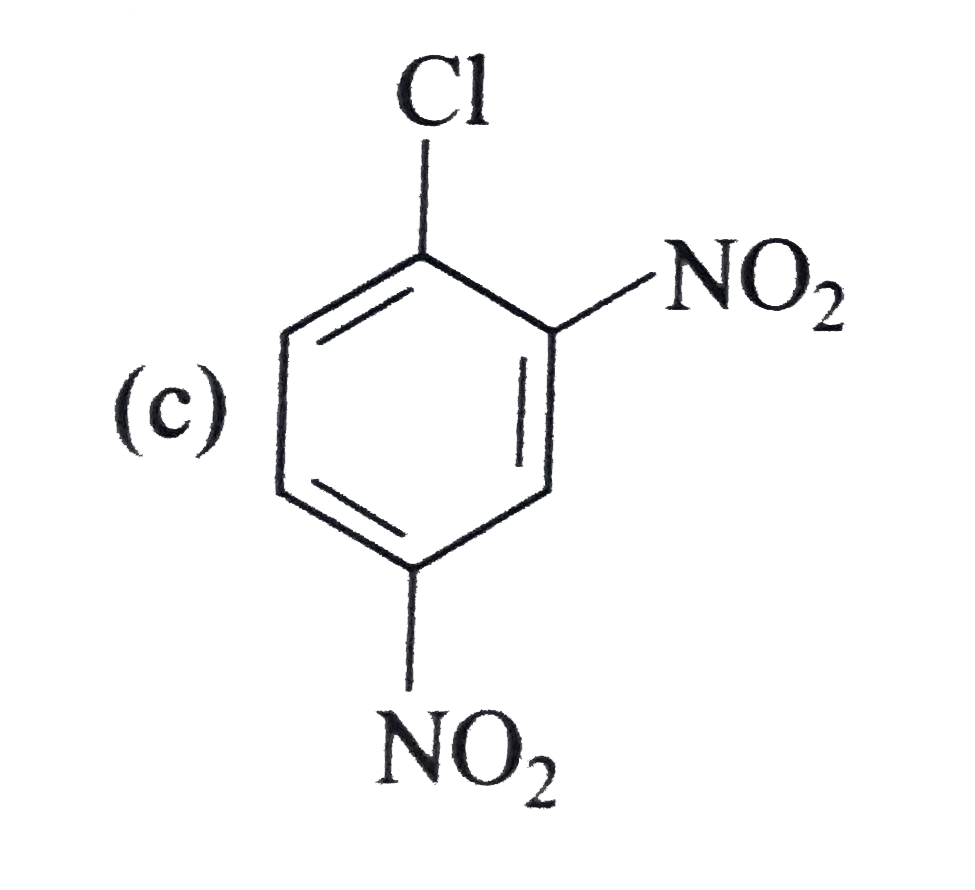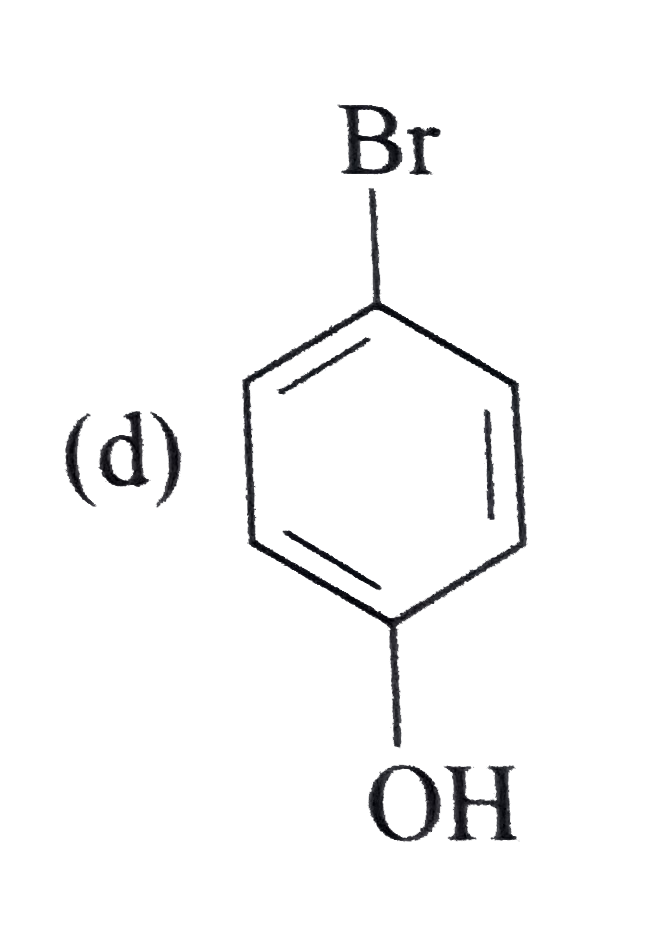Which of the following is least reactive towards nucleophilic substitution with aqueous KOH




The correct Answer is:B
To determine which of the given compounds is least reactive towards nucleophilic substitution with aqueous KOH, we can follow these steps:
Step 1: Understand the Types of Nucleophilic Substitution Reactions
Nucleophilic substitution reactions can be classified into two main types:
- SN1 (Unimolecular Nucleophilic Substitution): This mechanism involves the formation of a carbocation intermediate. The rate of reaction depends only on the concentration of the substrate.
- SN2 (Bimolecular Nucleophilic Substitution): This mechanism involves a single concerted step where the nucleophile attacks the substrate, leading to the displacement of the leaving group. The rate depends on both the substrate and the nucleophile.
Step 2: Identify the Leaving Groups
In this case, we need to consider the halides (Cl and Br) as leaving groups. The ability of a leaving group to depart is influenced by its stability as a lone pair after leaving:
- Bromide (Br⁻) is a better leaving group than chloride (Cl⁻) because it is a weaker base and more stable in solution.
Step 3: Analyze the Substituents on the Benzene Ring
The presence of electron-withdrawing or electron-donating groups on the benzene ring can significantly affect the reactivity of the halides:
- Electron-withdrawing groups (EWGs) (like NO₂) stabilize the positive charge on the carbocation formed in SN1 mechanisms and weaken the bond between carbon and the leaving group, making substitution easier.
- Electron-donating groups (EDGs) (like OH) increase the electron density on the carbon, making the bond stronger and thus less reactive towards nucleophilic substitution.
Step 4: Compare the Given Compounds
Let's analyze the four options based on the presence of substituents and the type of halide:
1. Option A: Benzene with Cl and NO₂
2. Option B: Benzene with Cl and OH
3. Option C: Benzene with Cl, NO₂, and another NO₂
4. Option D: Benzene with Br and OH
- Option A has one EWG (NO₂), which will enhance reactivity.
- Option B has an EDG (OH), which will decrease reactivity.
- Option C has two EWGs (NO₂), making it the most reactive.
- Option D has Br (better leaving group) but also has an EDG (OH), which will reduce its reactivity.
Step 5: Determine the Least Reactive Compound
Based on the analysis:
- Option C is the most reactive due to two EWGs.
- Option A is more reactive than Option D because of the presence of Cl and an EWG.
- Option D is more reactive than Option B due to the better leaving group (Br).
- Option B is least reactive because the OH group donates electrons, making the C-Cl bond stronger and less prone to nucleophilic attack.
Conclusion
The least reactive compound towards nucleophilic substitution with aqueous KOH is Option B.
---
Nucleophilic substitution reactions can be classified into two main types:
- SN1 (Unimolecular Nucleophilic Substitution): This mechanism involves the formation of a carbocation intermediate. The rate of reaction depends only on the concentration of the substrate.
- SN2 (Bimolecular Nucleophilic Substitution): This mechanism involves a single concerted step where the nucleophile attacks the substrate, leading to the displacement of the leaving group. The rate depends on both the substrate and the nucleophile.
In this case, we need to consider the halides (Cl and Br) as leaving groups. The ability of a leaving group to depart is influenced by its stability as a lone pair after leaving:
- Bromide (Br⁻) is a better leaving group than chloride (Cl⁻) because it is a weaker base and more stable in solution.
The presence of electron-withdrawing or electron-donating groups on the benzene ring can significantly affect the reactivity of the halides:
- Electron-withdrawing groups (EWGs) (like NO₂) stabilize the positive charge on the carbocation formed in SN1 mechanisms and weaken the bond between carbon and the leaving group, making substitution easier.
- Electron-donating groups (EDGs) (like OH) increase the electron density on the carbon, making the bond stronger and thus less reactive towards nucleophilic substitution.
Let's analyze the four options based on the presence of substituents and the type of halide:
1. Option A: Benzene with Cl and NO₂
2. Option B: Benzene with Cl and OH
3. Option C: Benzene with Cl, NO₂, and another NO₂
4. Option D: Benzene with Br and OH
- Option B has an EDG (OH), which will decrease reactivity.
- Option C has two EWGs (NO₂), making it the most reactive.
- Option D has Br (better leaving group) but also has an EDG (OH), which will reduce its reactivity.
Based on the analysis:
- Option C is the most reactive due to two EWGs.
- Option A is more reactive than Option D because of the presence of Cl and an EWG.
- Option D is more reactive than Option B due to the better leaving group (Br).
- Option B is least reactive because the OH group donates electrons, making the C-Cl bond stronger and less prone to nucleophilic attack.
The least reactive compound towards nucleophilic substitution with aqueous KOH is Option B.
Topper's Solved these Questions
- HALOALKANES AND HALOARENES BOOK - OP TANDONCHAPTER - HALOALKANES AND HALOARENES EXERCISE - Objective Questions Lavel -B Set II This set contains the questions
16 Videos
- HALOALKANES AND HALOARENES BOOK - OP TANDONCHAPTER - HALOALKANES AND HALOARENES EXERCISE - Assertion -Reason Type Questions
20 Videos
- HALOALKANES AND HALOARENES BOOK - OP TANDONCHAPTER - HALOALKANES AND HALOARENES EXERCISE - Objective Questions
234 Videos
- ELECTROCHEMISTRYBOOK - OP TANDONCHAPTER - ELECTROCHEMISTRYEXERCISE - Matrix-Matching Type Question
3 Videos
- ISOMERISM (STRUCTURAL AND STEROISOMERISM)BOOK - OP TANDONCHAPTER - ISOMERISM (STRUCTURAL AND STEROISOMERISM)EXERCISE - INTEGER
7 Videos
Similar Questions
Knowledge Check
Which of the following is least reactive towards nucleo- philic substitution?
AAlkyl halideBAllyl halideCVinyl chlorideDMethyl chlorideWhich of the following is the least reactive towards nucleophile?
ACH3CH2ClBCH3ClCH2C=CH−CH2ClDC6H5ClWhich of the following is the least reactive towards nucleophile?
ACH3CH2CH(CH3)CH2NH2 ↓NH3CH3CH2CH(CH3)CH2BrBCH3CHOHCN−−→CH3CH(OH)CNCCH3CH=CH2H2O/H+−−−−−→CH3CH(OH)CH3DRCHO+R'MgX→RCH(OH)R'
Which of the following will be least reactive in nucleophilic substitution ?
View SolutionWhich of the following is most reactive toward nucleophilic substitution reaction ?
View SolutionWhich of the following is most reactive towards nucleophilic substitution reaction?
View SolutionWhich of the following is most reactive toward nucleophilic substitution reaction ?
View SolutionWhich of the following is least reactive in a nucleophilic substiution reaction
View Solution
